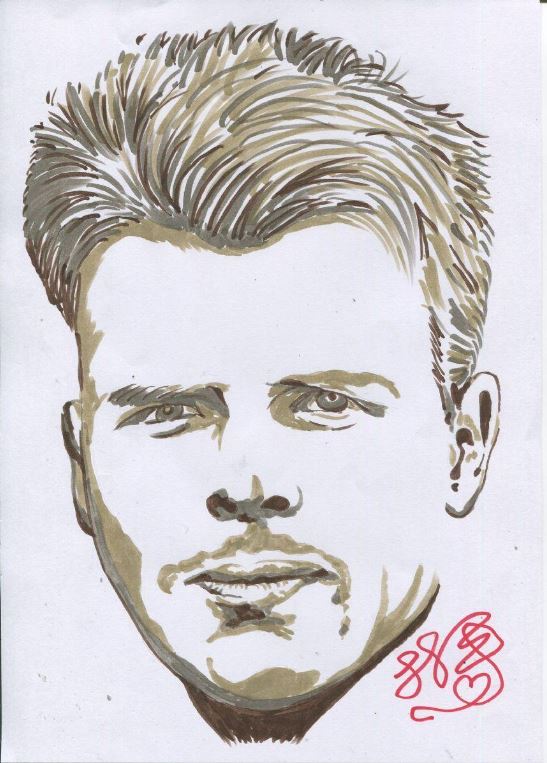Rorschach Test and Large Language Models
- Published on
- Author
- 張怡婷
Rorschach Test and Large Language Models
- Dr. Jason Yi-Bing Lin
I have been consistently exploring the combination of various tools with large language models (LLMs) as the most effective method for digitally transforming traditional software tools. For example, merging the Fishbone Diagram with ChatGPT has proven to be highly effective. My next goal is to experiment with integrating LLMs and the Rorschach Inkblot Test for psychological projection assessments.
When I attempted to integrate ChatGPT with the Rorschach Inkblot Test for psychological projection assessments, ChatGPT's performance was inconsistent and lacked authenticity.
The Rorschach test consists of 10 inkblot patterns, each near-perfect symmetrical. Among them, five are black, two are black and red, and the remaining three are colored. These inkblots were not randomly created; Hermann Rorschach (1884–1922) meticulously crafted each one to maximize ambiguity and "contradiction."
Rorschach developed the inkblot test to diagnose schizophrenia. Successive researchers expanded its use to assess general personality traits. This test has demonstrated remarkable vitality in both psychological and cultural settings.
The Rorschach test pays more attention to how you interpret what you see rather than the images themselves. While most of the inkblots may appear as meaningless shapes, they can reveal various perspectives, allowing for individual creativity. However, these inkblots also possess a specific structure that enables an objective assessment of whether your interpretations align with standard expectations or deviate from them.
Hermann Rorschach was a Swiss psychiatrist who studied under Carl Gustav Jung. Unlike Rorschach, Freud focused on verbal processes, and his psychological approach was centered on talk therapy, making it easier for early language models like ChatGPT to incorporate Freud's methods. In contrast, Rorschach believed that visual perception delves deeper than verbal expression and that our interpretations of what we see can reveal more insight into our identities. Recently, multimodal learning models (Multimodal LLMs) have proven to be better suited for adapting to Rorschach's test.
Shortly after creating the test, Rorschach passed away, and the test started to evolve in ways he could not have anticipated. In the United States, different variations of the Rorschach test are used to assess traits such as mysterious inner qualities, personal charisma, and what sets someone apart in a crowd.
During World War II, the Rorschach test became extensively used in clinical psychology. It was utilized in the Nuremberg trials for Nazi war criminals and also used to evaluate peasants in the jungles during the Vietnam War. Experts provide interesting interpretations of the responses given by subjects. For example, having more than four sexual responses out of the ten cards might be interpreted as a sign of schizophrenia, whereas an unusual low number of sexual responses could indicate sexual frustration.
Rorschach created the inkblot cards by folding them along their central axis while still damp, resulting in a symmetrical effect. This design allowed subjects to rotate the cards by 90 degrees and view them as reflections in water. When analyzing criminal subjects, mirror responses help differentiate between psychotic and non-psychotic individuals. Observing fine details in the shapes can be interpreted as a sign of impulsivity or heightened alertness, reflecting the ability to notice what others might overlook. However, an excessive focus on details might indicate an obsession with trivial matters, rigid and compulsive thought patterns, or even paranoia.
Afterward, many studies were published involving tests on different subjects, with some being quite bizarre and others rather amusing.
The Rorschach test has sparked considerable controversy and prompted in-depth research by meticulous scholars. A comprehensive study conducted in 2013 reviewed all research related to the aspects the test claims to measure, excluding less rigorous studies, and confirmed the test's current validity. The inkblots have objective visual traits, and the test has a concrete history and purpose. When administered properly, its results remain meaningful.
The Rorschach test is clearly not a simple tool to master, but its effectiveness could be significantly enhanced if skillfully integrated into large language models (LLMs) using techniques such as fine-tuning or Retrieval-Augmented Generation (RAG).

Hermann Rorschach, 1884~1922
現為國立陽明交通大學資工系終身講座教授暨華邦電子講座,曾任科技部次長,為ACM Fellow、IEEE Fellow、AAAS Fellow及IET Fellow。研究興趣為物聯網、行動計算及系統模擬,發展出一套物聯網系統IoTtalk,廣泛應用於智慧農業、智慧教育、智慧校園等領域/場域。興趣多元,喜好藝術、繪畫、寫作,遨遊於科技與人文間自得其樂,著有<閃文集>、<大橋驟雨>。